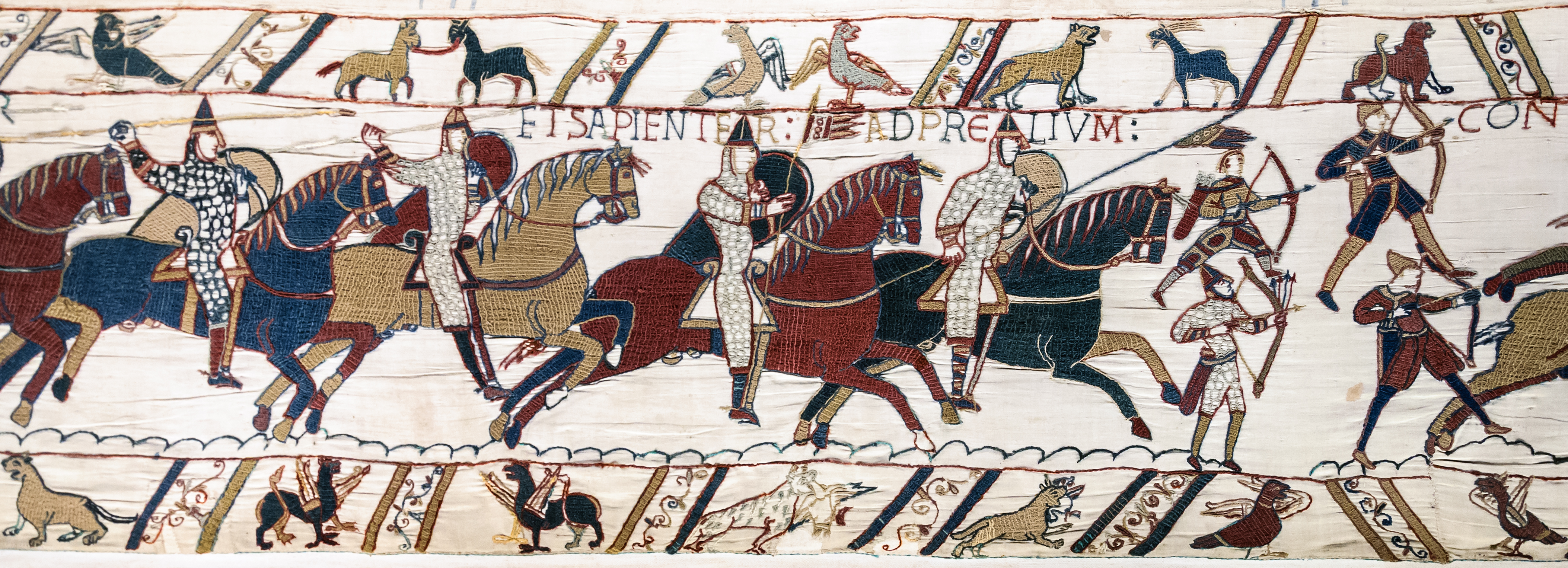Let’s take a closer look at the examples:
Bayeux Tapestry:
as fas as I can see the person in question does not wear a helmet either. Also the strap sits at a really unrealistic position. Like this the belt would strangle him, when he raises the arm to shoot. It could be shown that this guy is very actively fighting, therefore the lost helmet and weirdly hanging belt. Or it should be a joke (ancient humor is weird, too …), or some very few selected people prefer it that way, but we may never know, because you don’t create rules out of exceptions.
14th century:
This lady doesn’t seem to “wear” the Arrows, they seem to hover over her lower back. The arrows also look rather peculiar. This is clearly the fantasy of the artist and the position looks rather belt-region (waist) than back.
Persian Immortals:
(Different culture, but …) I looked up ancient persian archery and all showed the quivers at the belt, except two reliefs: this and another in the same style, three people in robes and golden circlets with quiver AND Bow over their shoulders. Seeing the robes and everything it strikes me more of a ceremony or representation of gods than real soldiers. The arrow ends aren’t even sticking out from the “quiver” making them nearly impossible to reach - this is clearly not a combat depiction and again: seemingly an exception.
Samurai 1 and 2:
(Again different culture, but …) they don’t even have quivers! It looks like a small bag as protection of the tips and a ring and strap that are tied to the armor directly, holding the arrows together. This is a very different concept and should be completely separated from the discussion.
16th century:
… aah, the time of romantification of ancient greece. It does look more like a cornucopia and the bow is stuck inside with the arrows? I’m putting this in the realm of fantasy, along with those sandals and the totally greek blond hair and the ribbons and buttons on the cloth. Looking at a lot of vase paintings, ancient greek seem to have worn the quivers like the persians: a long strip over the shoulder and the quiver hanging at hip height.
Before Agriculture:
Almost no details, just big splotches of paint left. It does look like back quivers, so I looked up african tribes, where techniques are still pretty much those of the first humans. They seem to have either no quiver at all or a small one with a string attached. When walking normally, they carry it over the left shoulder, when shooting they keep it in the (left) hand holding the bow. Not exactly what I’d call a back quiver.
So, to sum it up: none of these examples would count as a convincing evidence for (fairly) frequent back quiver use in european history. They all seem to be very curious exceptions to the rule of quivers at hip height. It’d be interesting to examine these exceptions and why they came to be, although for some pictures we’ll never know.
As for medieval book illustrations, quite a lot of them are some kind of joke, irony or fantasy that are often difficult or impossible to correctly interpret.
But … ye … now I’m kinda really interested in persian archery 









